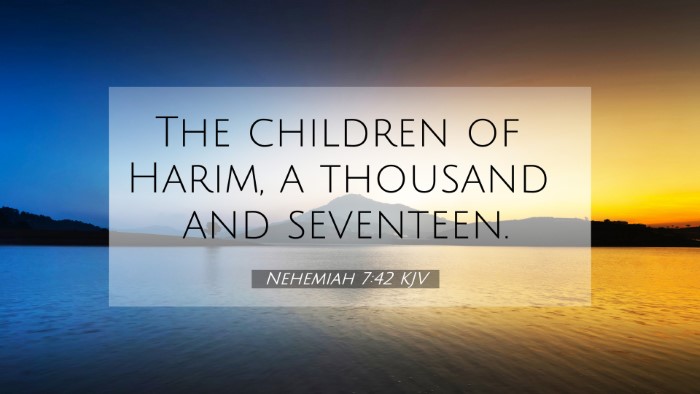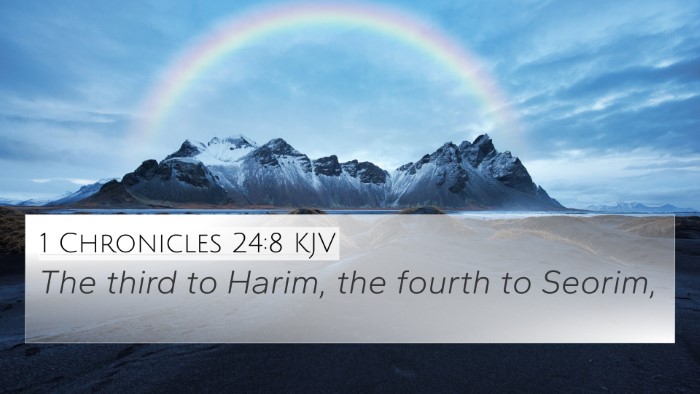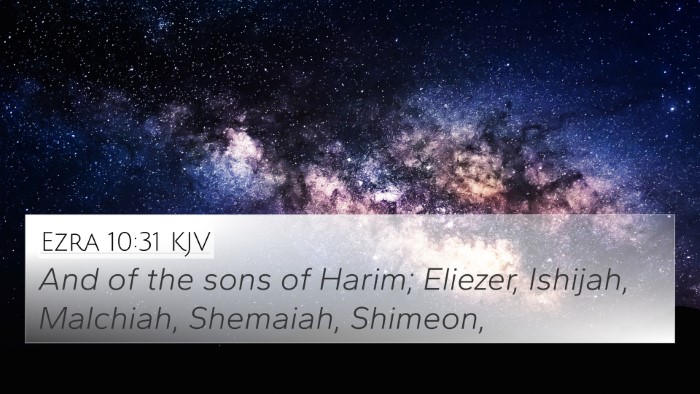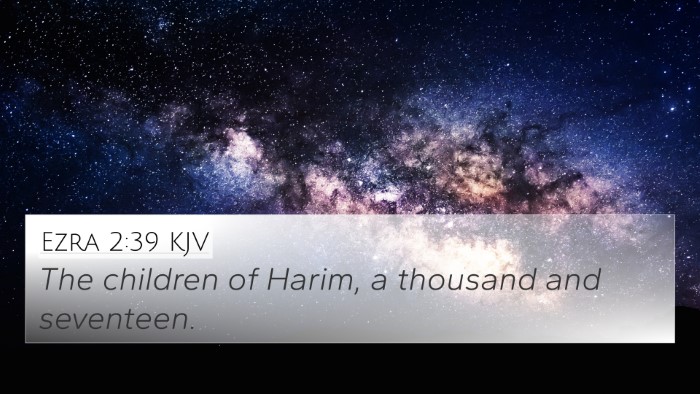Understanding Nehemiah 7:42
Nehemiah 7:42 states: "The children of the priests: the children of Jedaiah, of the house of Jeshua, nine hundred seventy and three." This verse highlights the significance of the priestly lineage and the role of the descendants of Aaron in the restoration of Jerusalem.
Contextual Significance
The context of Nehemiah 7 describes the return of exiles to Jerusalem after the Babylonian captivity, emphasizing the importance of the identity and organization of the people of God in the community's rebuilding efforts. Nehemiah carefully accounts for those who returned, both to ensure the fulfillment of God's promises and to re-establish temple worship.
Commentary Insights
-
Matthew Henry:
Henry underscores the importance of the priestly family ties, indicating that the returning exiles were a fulfillment of God's covenant with Israel. The specific number of priests returning signifies God's faithfulness in preserving His people. The mention of their lineage indicates a continuity of worship and religious service that the exiles would restore in Jerusalem.
-
Albert Barnes:
Barnes highlights the organizational aspect of the returned Israelites, noting that the precise numbering reflects orderliness and preparation for the temple's restoration. The mention of "children of the priests" indicates a line of spiritual leadership necessary for guiding the people in their religious duties and commitments.
-
Adam Clarke:
Clarke elaborates on the implications of their lineage, pointing out that the priests were essential for conducting services and sacrifices. They represented a direct line to the original worship practices established in the Mosaic Law, illustrating that worship in the temple would continue as God intended.
Bible Cross-References
Nehemiah 7:42 connects with several other Bible verses that speak to the themes of priestly heritage and worship:
- Ezra 2:36-39: These verses list the priests who returned from exile, establishing continuity with Nehemiah's account.
- Exodus 28:1: God commands the consecration of Aaron and his sons, emphasizing the foundation of the priestly role.
- Numbers 3:10: This verse appoints the Levites to serve the priests, highlighting the structured order of worship.
- Joshua 21:4-5: The distribution of priestly cities among the Levites reveals the importance of maintaining the priestly line.
- 1 Chronicles 6:49: This verse underscores the lineage of Aaron, confirming the historical context of the priesthood.
- Luke 1:5: References to a priest named Zechariah, showing the ongoing role of priests in the New Testament context.
- Hebrews 7:11-12: Discuss the change of the priesthood, reflecting on how Christ fulfills and transforms the priestly role.
- Revelation 1:6: Affirms that believers have become a royal priesthood, showing the evolution of the priestly function in God's plan.
- Romans 12:1: Calls believers to present their bodies as living sacrifices, linking to the priestly duty of offering.
- 1 Peter 2:9: Reiterates that believers are a chosen generation, a holy priesthood, which echoes the call of the Levites.
Thematic Connections
The thematic links present in Nehemiah 7:42 and its cross-references reveal a deeper understanding of God’s plan through the priesthood:
- Priestly Identity: The connections between the verses demonstrate the continuity of the priestly identity from the Old Testament through the New Testament.
- Worship Restoration: The focus on returning exiles reflects God’s faithfulness in restoring true worship in a broken world.
- Community Structure: The detailed listings in Nehemiah indicate that organized worship is crucial to the community's life and function.
Conclusion
In examining Nehemiah 7:42, we find that this verse is rich with meanings that connect the restoration efforts of the Israelites back to the priestly duties established by God. The insights drawn from public domain commentaries emphasize the enduring role of the priesthood and the importance of maintaining spiritual heritage in worship. By exploring cross-references, we can see how this verse ties into a broader scriptural narrative, enhancing our understanding of both the context and implications of the text.





